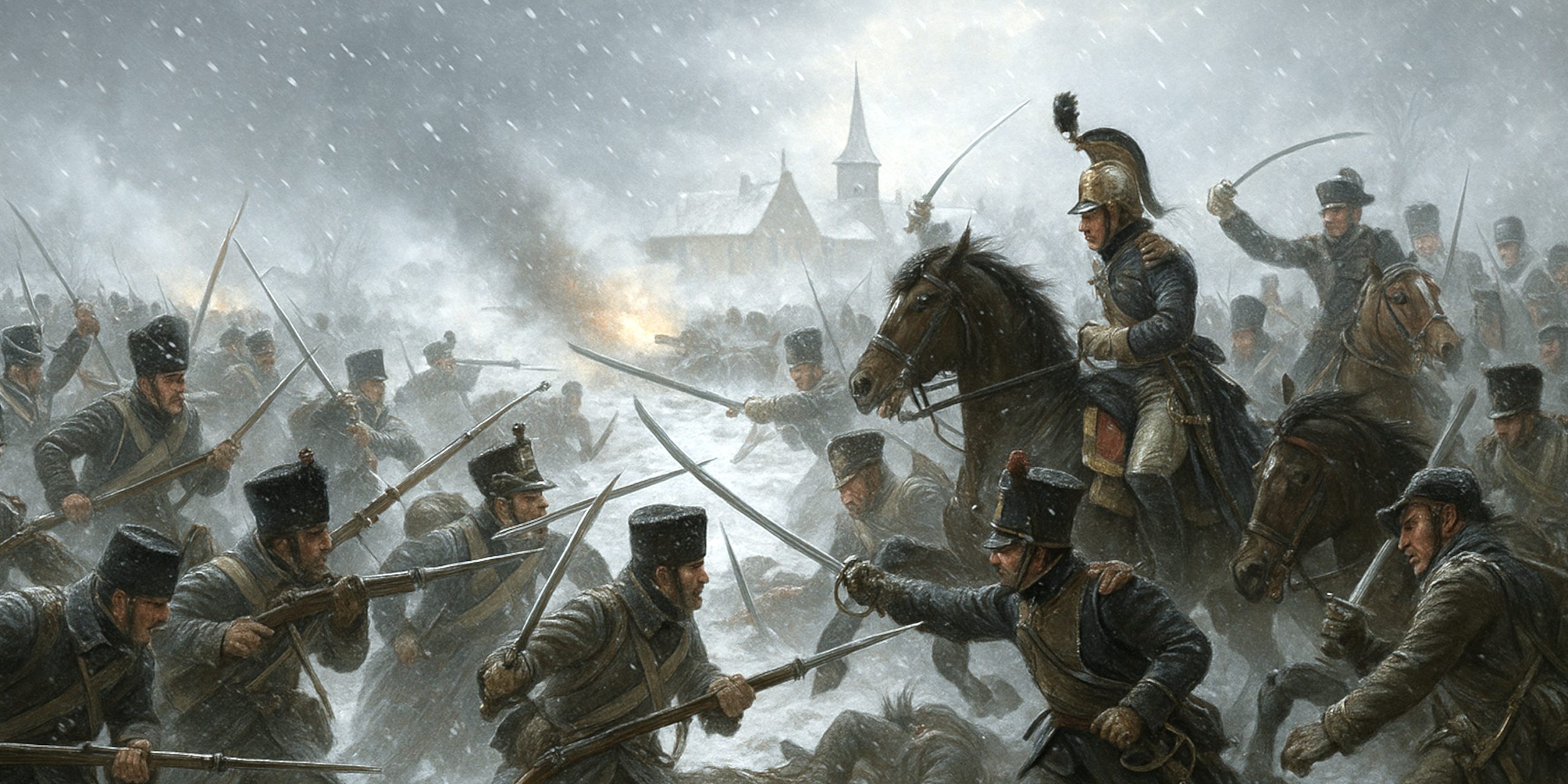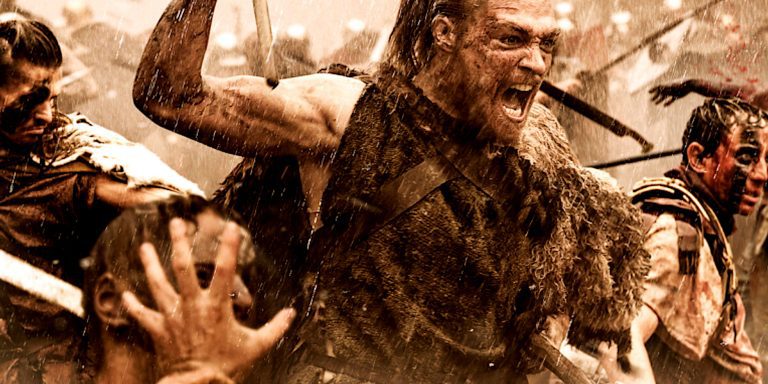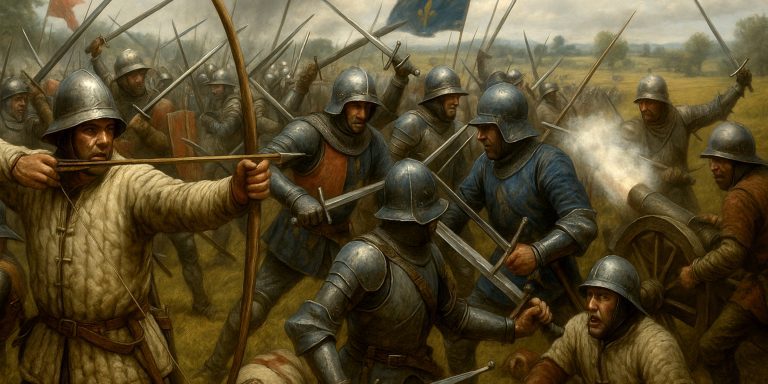
On 1 February 1814, in the frozen fields of Champagne, Napoleon Bonaparte fought the Battle of La Rothière against an Allied army of Austrians, Russians, Prussians, and Bavarians. It was the first major engagement of the French Campaign of 1814 and, unlike many of Napoleon’s earlier triumphs, this one ended badly. Snow, ice, overwhelming numbers, and sheer attrition combined to give Napoleon one of his rare battlefield defeats.
This was no small skirmish. It was the clash that convinced many in Europe that Napoleon’s days as master of the continent were finally numbered.
Background
The Sixth Coalition was advancing on France from all directions. After Napoleon’s disastrous Russian campaign and the decisive defeat at Leipzig in 1813, the Allied armies pursued the French across the Rhine. By January 1814, they were deep into eastern France.
Napoleon scrambled to assemble what forces he could, drawing on conscripts, veterans, and fragments of the Imperial Guard. La Rothière became his attempt to halt the Allied advance before they reached Paris.
Forces
French Army
Napoleon commanded around 45,000 men with 128 guns. His army was a mix of hardened Guard veterans and poorly trained conscripts. The cavalry arm was much reduced compared to earlier campaigns.
Allied Army
Field Marshal Prince Schwarzenberg led the Allied force, numbering about 100,000 men with 300 guns. It was a vast and unwieldy coalition, but sheer size gave it teeth.
Leaders and Troop Composition
| Side | Commander | Estimated Strength | Notable Corps and Leaders |
|---|---|---|---|
| France | Napoleon Bonaparte | 45,000 men, 128 guns | Marshals Victor, Ney, Marmont, and Oudinot. Imperial Guard present. |
| Allies | Prince Karl Schwarzenberg | 100,000 men, 300 guns | Blücher (Prussians), Wittgenstein (Russians), Wrede (Bavarians), Gyulai (Austrians). |
Arms and Armour
The battle showcased Napoleonic warfare at its grittiest. Muskets and artillery dominated, but swords still played their role, particularly in the cavalry engagements that slashed across the icy ground.
- French Weapons
- Infantry: Charleville Model 1777 musket, bayonet
- Cavalry:
- Heavy: AN XI Cuirassier sword (straight, heavy, for brutal cuts and thrusts)
- Light: 1803 sabre (curved, swift, elegant when not stuck in snowdrifts)
- Artillery: Gribeauval system guns
- Allied Weapons
- Infantry: Russian Model 1808 musket, Austrian 1798 musket, Prussian Potsdam muskets
- Cavalry:
- Austrian heavy cavalry sword (1798 pattern)
- Prussian Blücher sabre (close cousin of the British 1796 light cavalry sabre)
- Russian dragoon sabres, serviceable if not beautiful
- Artillery: A mixed bag of calibres, but plentiful
Napoleonic battlefields were not duelling grounds of shining steel, but sabres and cuirassier swords still settled matters once cavalry clashed.
Battle Timeline
- Morning, 1 February 1814
Snow fell heavily, blinding soldiers and clogging powder. The Allies attacked French positions around La Rothière, Chaumesnil, and Morvilliers. - Midday
Blücher’s Prussians pressed Marmont’s corps, while Russian columns advanced through the snow. Fighting was confused, slow, and murderous. - Afternoon
Ney counter-attacked, pushing back Wrede’s Bavarians, but sheer Allied weight gradually told. French troops were forced out of several villages after hand-to-hand fighting. - Evening
Darkness and blizzards brought the battle to a close. Napoleon withdrew in good order, saving much of his army but conceding the field.
Contemporary Voices
- Marshal Victor reportedly declared: “We are fighting not men, but snow and iron.”
- A Russian officer wrote home: “The French fought like lions, but the weather fought for us.”
- Napoleon himself, with characteristic understatement: “It is nothing. We shall beat them tomorrow.” (He did not.)
Outcome and Legacy
The battle was an Allied victory, though costly and confused. French losses were around 6,000, while the Allies lost about 8,000. Despite technically losing more men, the Allies could absorb the losses. Napoleon could not.
La Rothière proved that Napoleon could be beaten on French soil, and it boosted Allied confidence for the drive on Paris. Yet the Emperor was far from finished. In the weeks that followed, he launched the brilliant Six Days’ Campaign, winning several quick victories. La Rothière, however, remained the reminder that even Napoleon could be undone by numbers, weather, and dwindling resources.
Archaeology
The fields of La Rothière still yield artefacts from the winter battle. Musket balls, bayonets, uniform buttons, and fragments of artillery shells have been uncovered. Metal detectors occasionally bring up French cuirassier sword parts, often rusted beyond recognition. Local memorials mark where French and Allied troops fell, though much of the battlefield is still farmland.
The Seven Swords Takeaway
The Battle of La Rothière was not Napoleon’s most famous defeat, but it mattered. It marked the beginning of the end for him in France. It was also a reminder that battles are not always won by genius alone. Sometimes, snow, cold, and sheer numbers have the final say. And if ever there was proof that winter remains history’s greatest general, this was it.
Watch the documentary:



